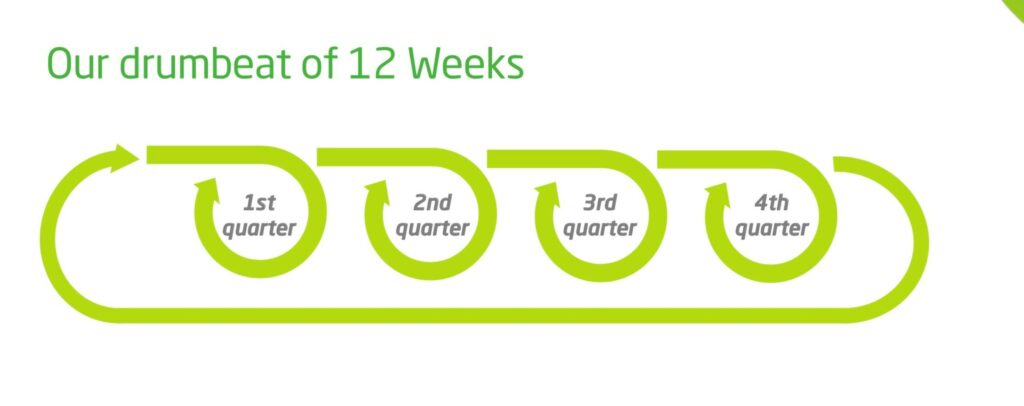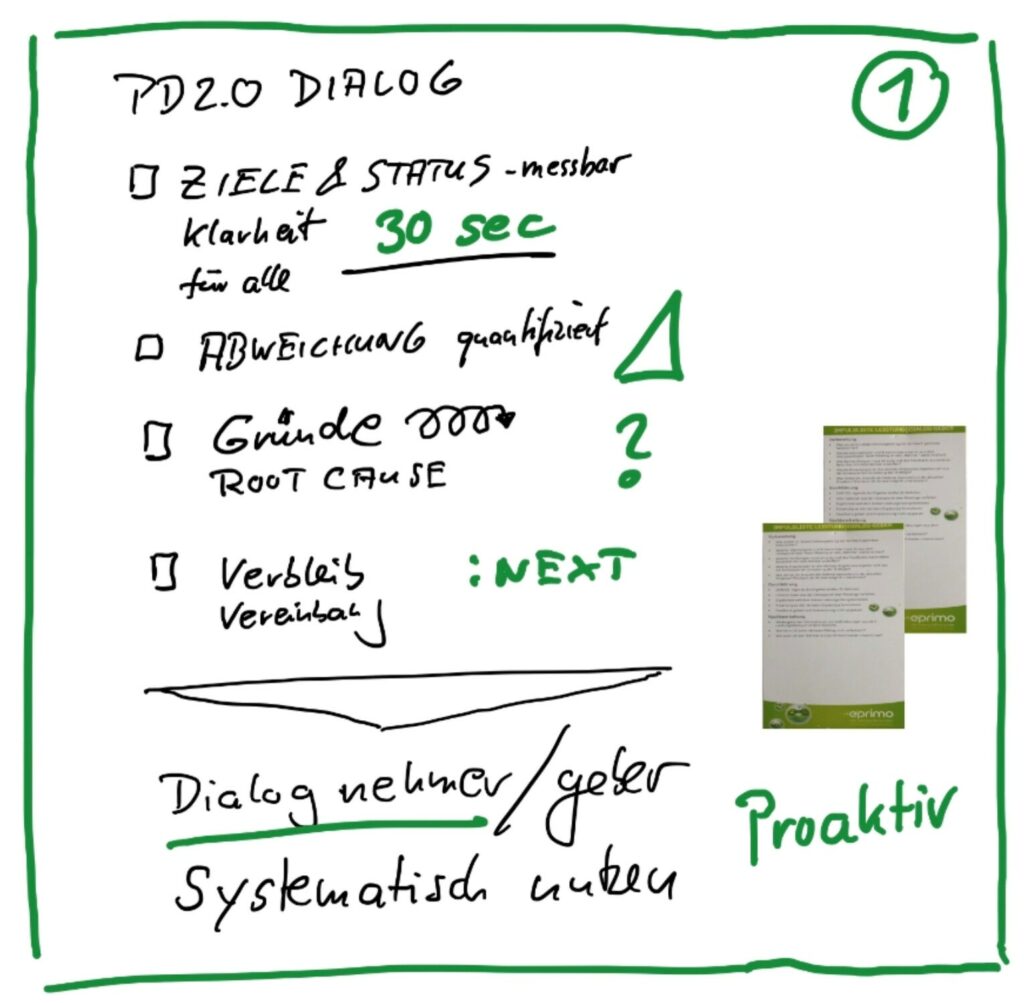This is part 4 of a series of blogs of our transformation lean&agile at eprimo.
The problem to solve
One of the most relevant deficiencies we identified in our taking stock prior to the transformation was the lacking match between targets and resources.
Scarcity of resources or better abundance of initiatives has been one of the biggest painpoints we were facing. And the dilemma is well known – too many initiatives for the existing resources. In a retrospective we identified that resources were not matched with the most promising targets for two reasons – unbalanced prioritization and missing synchronization between the different work streams. The prioritization for resource allocation were taken on request whenever necessary and on different criteria in the respective silos. Or just first come, first serve. Or run over change. Another challenge regarding availability of resources became obvious. Whenever a new initiative was triggered somewhere it absorbed e.g. the available IT resources for the time the project was running, regardless of its value delivered. So a new initiative had to queue up. Managing Bottlenecks e.g. fast track etc. was ineffective and time consuming. And we found zombie initiatives – pilots which already were inactive but still alive consuming resources in operations and IT. Due to increasingly more change requests in shorter time periods an adaption of the existing framework was necessary.
Synchronizing lean&agile
To Start with starting means here and now. Following this principle we invited teams to go agile, and they did. Most of them attained benefits in what they tackled by themselves but experienced difficulties in collaborating with others. The reason being: there were different autonomous delivery cycles in different teams. This caused undesired frictions to run lean&agile at scale.

Furthermore with some teams being more agile and others being more lean, it was necessary to establish a framework for the entire company in which both team setups are able to deliver almost seamlessly.
To leverage lean&agile at scale, eprimo decided to synchronise its delivery cycles by using a ‘ drumbeat for performance’: A drumbeat of 12 weeks makes sure that all teams start at the same time and end up once three months are over. During this time interval, all teams operate with their committed objectives focussing on the outcome – ambitious key results to deliver on the objectives of the company. Once the cycle is finished, the teams start again from scratch.
Ressource allocation follows Value
Prior to each quarter the four most relevant objectives are defined. Ambitious products are offered by the teams against these objectives with a suggested value (Key result) and a Ressource tag attached to it. Within the OKR workshop the different products are weighed, their interdependencies are made transparent and the Ressource allocation in terms of budget and manpower takes place. This makes sure that the most promising key result portfolio is chosen with the biggest value for the resources. Key results not chosen remain in the backlog. This focus provided much higher impact in defined cycles. As this procedure is repeated each quarter high flexibility can be provided as well to react on impediments, opportunities.
The drumbeat elements
The following explains how these agile frameworks are organised:
- a preguidance of CEO/CFO to all owners and agile masters highlights the main objectives and their priority for the quarter to come.
- the teams plan and offer their intended key results, including resources to deliver on the objectives in an iterative way. Teams are guided and supported by the agile leads.
- the OKR workshop provides (i.) an aligned company OKR set and (ii.) the respective team sets.
- as the major Key factor the corresponding IT capacity is centralised with SAFe or decentralised in the delivery teams.
- a retrospective meeting in each team is conducted to reflect on the way of working (HOW) of the last weeks, and how to improve the learning curve.
- a company-wide review concludes the quarter for all teams by reviewing the results (WHAT) in an exhibition-like format. Successes are celebrated.
Framework in action
To make sure that the eprimo lean&agile framework delivers on its expectations, we developed and managed the framework as an agile product itself. We learned that all elements need to fit together. To do this, we established a so-called ‘Framework Master’ who operates, monitors and adapts the framework whenever needed. This helped us get to our objectives. For instance, when we started with OKR we were proud with the first sets containing compelling key results. OKR provided guidance and clarity at the company level for the three upcoming months as never before. Later we identified ressource constraints and ways to tackle bottlenecks in critical areas. Overall, it took us some cycles to fully understand how OKR works, especially how OKR could help improve the match between targets and resources company-wide. And still it remains a challenge considering dependencies and impediments. The planning cycle starts a month prior to kickoff of the next quarter on time.
Performance dialogues
To ensure structured and systematic updates during the quarter, teams run performance dialogues frequently. The owner usually provides proactive transparency on the corresponding KPI and OKR to monitor the progress.

The ambition is to provide a quick update in a 30sec pitch. The status quo of each team is transparent to all eprimos via documentation in Confluence, a virtual collaboration tool. Statuses are challenged where necessary. In case of deviations, the owner suggests a way to get back on track and receives sounding and feedback. Everyone is requested to offer help if necessary.
When concluding the quarter, reflections take place
This is a very important structural element in our transformation. In a retrospective meeting the team reflects on HOW they concluded their quarter and what they have learned (we always distinguish findings – taking them into the luggage of tomorrow or dropping them into the dust bin of the past). This format is orchestrated by agile masters to provide company-wide learning.
Another format is the quarterly review meeting. The review is ultimately the element to end the quarter on a high.

All teams demonstrate WHAT they have achieved during the last three months. It is like a big exhibition where eprimos can see the key team results live: e.g., products and learnings about customer acceptance, prototypes, performance improvements or simply new findings. And yes it is a celebration. The review is an impressive demonstration of what has been achieved in a quarter and hence provides a lot of energy.
As described this is a status of our framework, if you have made experience, please share them.
Take Home Message —> a dedicated framework synchronises different forms of lean&agile and helps focussing resources on maximal value







